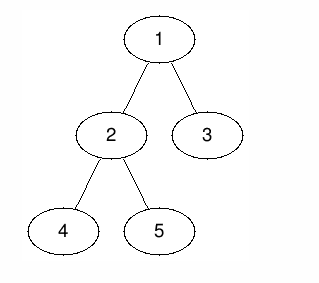CF1254D Tree Queries
题目描述
Hanh 是一位著名的生物学家。他喜欢在自己的花园里种树并做实验。
有一天,他得到了一棵包含 $n$ 个顶点的树。顶点编号为 $1$ 到 $n$。一棵有 $n$ 个顶点的树是一个无向连通图,包含 $n-1$ 条边。最初,Hanh 将每个顶点的值都设为 $0$。
现在,Hanh 要进行 $q$ 次操作,每次操作有以下两种类型之一:
- 类型 $1$:Hanh 选择一个顶点 $v$ 和一个整数 $d$。然后他随机均匀地选择一个顶点 $r$,列出所有从 $r$ 到 $u$ 的路径经过 $v$ 的顶点 $u$。Hanh 将所有这样的顶点 $u$ 的值增加 $d$。
- 类型 $2$:Hanh 选择一个顶点 $v$,并计算 $v$ 的期望值。
由于 Hanh 擅长生物学但不擅长数学,他需要你来帮助完成这些操作。
输入格式
第一行包含两个整数 $n$ 和 $q$($1 \leq n, q \leq 150\,000$),分别表示 Hanh 的树的顶点数和他要进行的操作数。
接下来的 $n-1$ 行,每行包含两个整数 $u$ 和 $v$($1 \leq u, v \leq n$),表示存在一条连接顶点 $u$ 和 $v$ 的边。保证这 $n-1$ 条边构成一棵树。
最后 $q$ 行,每行描述一次操作,格式如下:
- $1\ v\ d$($1 \leq v \leq n, 0 \leq d \leq 10^7$),表示一次第一类操作。
- $2\ v$($1 \leq v \leq n$),表示一次第二类操作。
保证至少有一次第二类操作。
输出格式
对于每一次第二类操作,输出一行该顶点的期望值。
设 $M = 998244353$,可以证明,期望值可以表示为最简分数 $\frac{p}{q}$,其中 $p$ 和 $q$ 是整数且 $q \not\equiv 0 \pmod{M}$。输出满足 $0 \le x < M$ 且 $x \cdot q \equiv p \pmod{M}$ 的整数 $x$。
说明/提示
下图展示了样例中的树结构:

对于第一个查询,$v = 1$ 且 $d = 1$:
- 若 $r = 1$,所有顶点的值都增加。
- 若 $r = 2$,顶点 $1$ 和 $3$ 的值增加。
- 若 $r = 3$,顶点 $1$、$2$、$4$ 和 $5$ 的值增加。
- 若 $r = 4$,顶点 $1$ 和 $3$ 的值增加。
- 若 $r = 5$,顶点 $1$ 和 $3$ 的值增加。
因此,这次操作后所有顶点的期望值为($1, 0.4, 0.8, 0.4, 0.4$)。
对于第二个查询,$v = 2$ 且 $d = 2$:
- 若 $r = 1$,顶点 $2$、$4$ 和 $5$ 的值增加。
- 若 $r = 2$,所有顶点的值都增加。
- 若 $r = 3$,顶点 $2$、$4$ 和 $5$ 的值增加。
- 若 $r = 4$,顶点 $1$、$2$、$3$ 和 $5$ 的值增加。
- 若 $r = 5$,顶点 $1$、$2$、$3$ 和 $4$ 的值增加。
因此,这次操作后所有顶点的期望值为($2.2, 2.4, 2, 2, 2$)。
由 ChatGPT 4.1 翻译